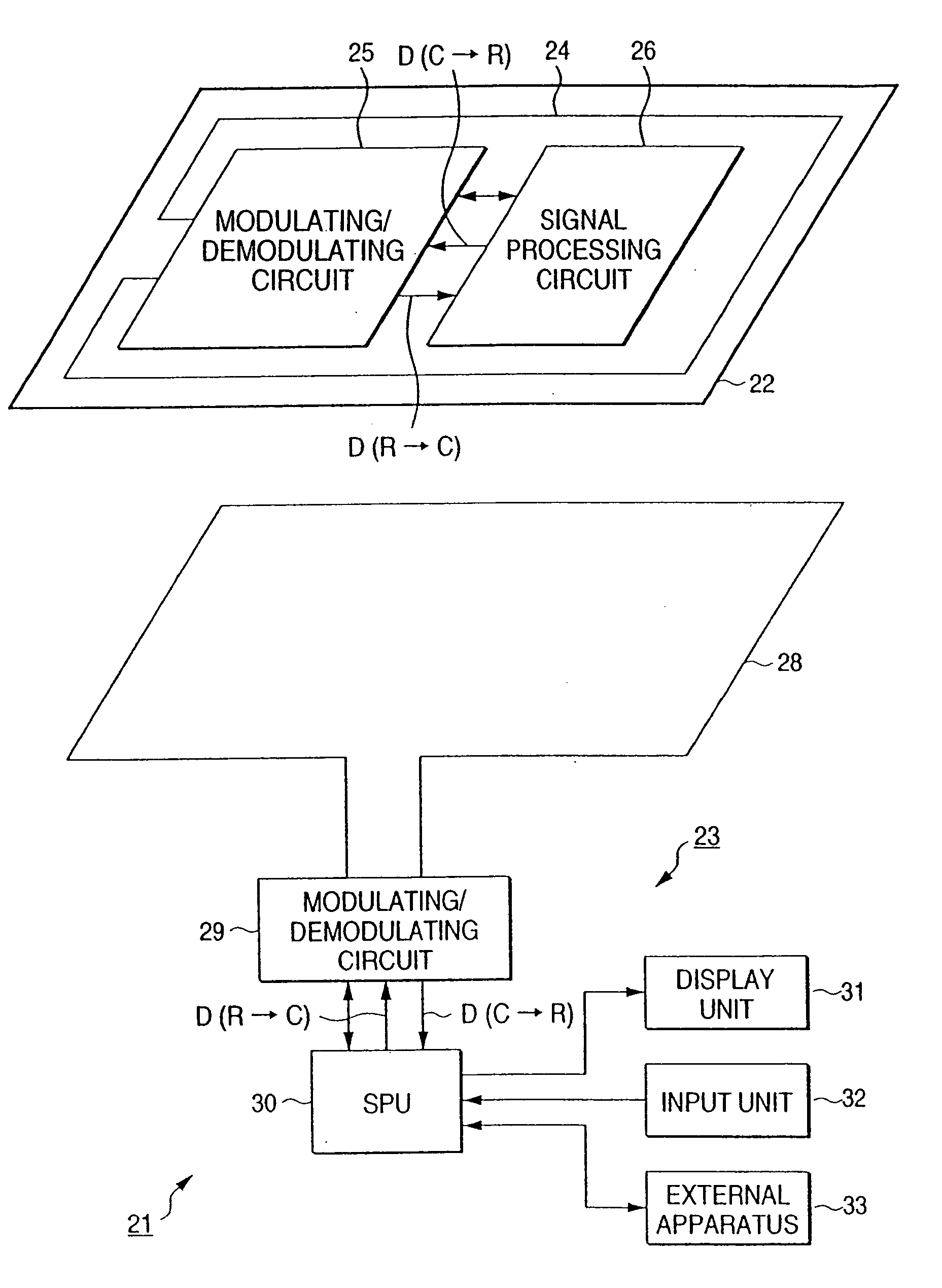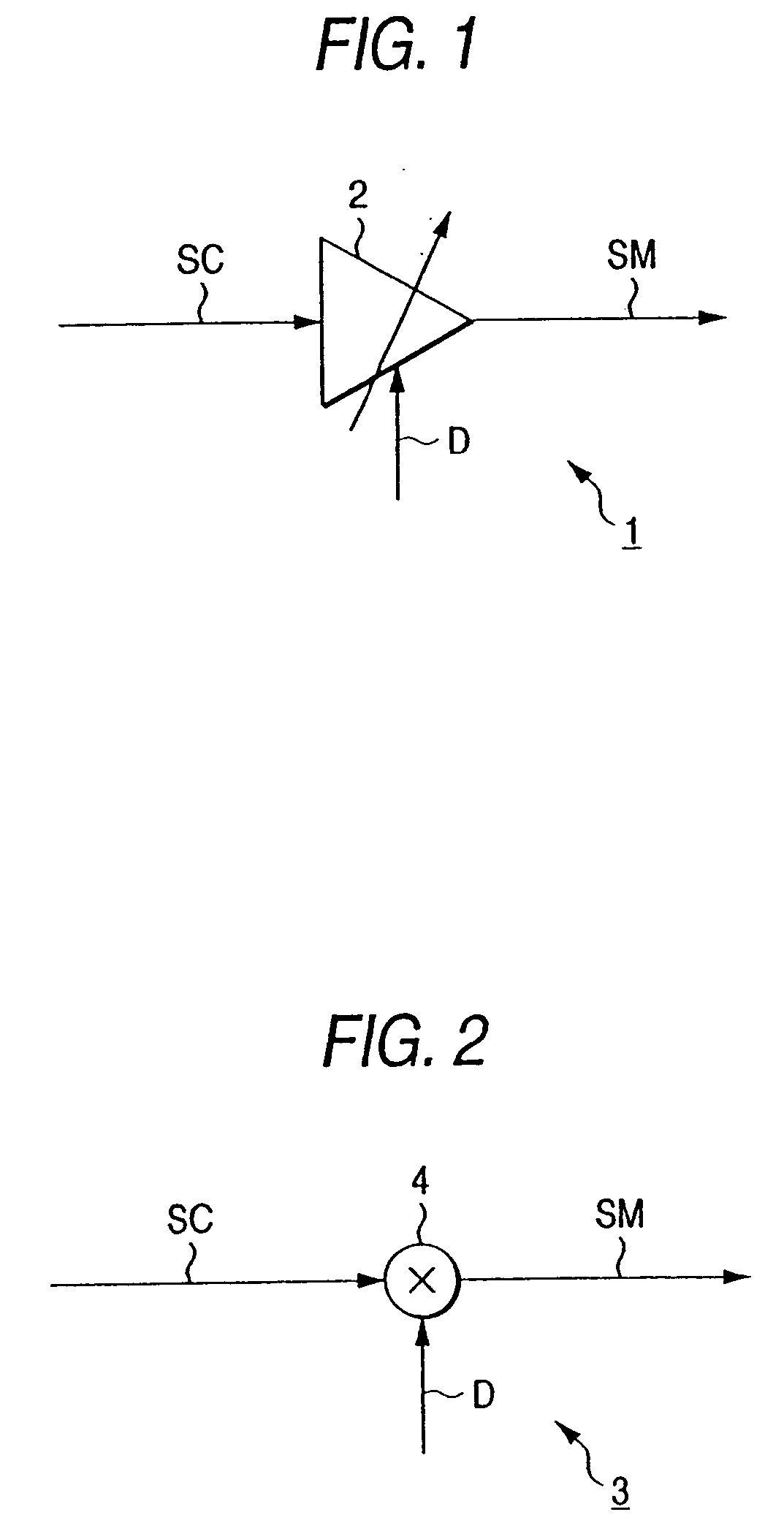Contactless IC card system
a ic card and contactless technology, applied in the field of contactless ic card systems, can solve the problems of low power efficiency of conventional modulating circuits, complex circuit arrangement, and inability to meet the necessary items of ic card systems, and achieve the effect of simple and easy manufacturing and high efficiency
- Summary
- Abstract
- Description
- Claims
- Application Information
AI Technical Summary
Benefits of technology
Problems solved by technology
Method used
Image
Examples
first embodiment
Advantages of First Embodiment
[0278] In accordance with the above-described circuit arrangement of the first embodiment, with respect to the power-amplified output of the power amplifying circuit 59 for power-amplifying the carrier signal SC by a predetermined phase, the power-amplified output of the power amplifying circuit 59 for similarly power-amplifying the carrier signal SC by a preselected phase is gated to be added in response to the logic level of the transmit data stream “D(R→C)”. As a consequence, the power-amplified ASK modulation signal can be produced by employing the power amplifying circuits which are designed by mainly considering the power efficiency without considering the linearity thereof to some extent. Therefore, the power efficiencies of these power amplifying circuit can be increased, as compared with those of the conventional power amplifying circuits. Also, these power amplifying circuits may be constituted by employing the commercially available electroni...
second embodiment
ASK Modulating Circuit of Second Embodiment
[0280] As shown in FIG. 15 in contrast with FIG. 9, there is indicated a basic idea of an ASK modulating circuit applied to a second embodiment of the present invention. In this ASK modulating circuit 79, the power-amplified results obtained from the power amplifying circuits 59 and 62 are supplied to two signal paths of antennas 28A and 28B, respectively. These two power-amplified results are added to each other in electromagnetic fields transmitted from the antennas 28A and 28B.
[0281] As represented in FIG. 15, even when the ASK modulating circuit is so arranged that these two power-amplified results are added to each other in the electromagnetic fields, it is possible to achieve a similar effect to that of the first embodiment.
third embodiment
ASK Modulating Circuit of Third Embodiment
[0282]FIG. 16 is a block diagram for representing a basic arrangement of an ASK modulating circuit applied to a third embodiment of the present invention. In this third embodiment, this ASK modulating circuit 80 is applied instead of the ASK modulating circuit 47 and the power amplifying circuit 48 (see FIG. 8) of the reader / writer 23.
[0283] In other words, in the ASK modulating circuit 80, after the carrier signal is amplified by the power amplifying circuit 81, the amplified carrier signal is outputted via a variable attenuator 82. In response to the transmit data stream TX(D(R→C)), the variable attenuator 82 attenuates this carrier signal to thereby output the attenuated carrier signal. As a result, this ASK modulating circuit 80 outputs such an ASK modulation signal SM, the amplitude of which is varied in response to the transmit data stream TX(D(R→C)).
[0284] As a typical variable attenuator type, for example, the variable attenuator 8...
PUM
 Login to View More
Login to View More Abstract
Description
Claims
Application Information
 Login to View More
Login to View More - R&D
- Intellectual Property
- Life Sciences
- Materials
- Tech Scout
- Unparalleled Data Quality
- Higher Quality Content
- 60% Fewer Hallucinations
Browse by: Latest US Patents, China's latest patents, Technical Efficacy Thesaurus, Application Domain, Technology Topic, Popular Technical Reports.
© 2025 PatSnap. All rights reserved.Legal|Privacy policy|Modern Slavery Act Transparency Statement|Sitemap|About US| Contact US: help@patsnap.com



